Die Entwicklung von WordPress 4.4 begann unmittelbar nach der Veröffentlichung von WordPress 4.3 mit vollem Schwung. Wir haben die Entwicklung genau verfolgt und freuen uns, berichten zu können, dass es voraussichtlich in der zweiten Dezemberwoche 2015 veröffentlicht wird. In diesem Artikel werden wir Ihnen zeigen, was in WordPress 4.4 mit Funktionen und Screenshots kommt.
Hinweis: Sie können die Beta-Version auf Ihrem Computer oder in einer Staging-Umgebung ausprobieren, indem Sie das WordPress Beta Tester Plugin verwenden.
Twenty Sixteen – Das neue Standard-WordPress-Theme
Seit 2010 wird WordPress jedes Jahr mit einem neuen Standard-Theme ausgeliefert. Dieser Tradition folgend, kommt WordPress 4.4 mit einem neuen Standard-Theme für 2016, genannt Twenty Sixteen.
Twenty Sixteen bietet das traditionelle Blog-Layout mit einer Seitenleiste und einem Inhaltsbereich. Das Design konzentriert sich auf Lesbarkeit und elegante Darstellung auf allen Geräten.
Es wird mit fünf Farbschemata geliefert: Standard, Dunkel, Grau, Rot und Gelb. Benutzer können auch ihre eigenen Farben wählen, um unbegrenzte Farbschemata zu erstellen.
Es unterstützt benutzerdefinierte Kopfzeilen und verfügt über zwei Menüpositionen, eine für die Website-Navigation und eine für soziale Links.
Responsive Bilder aus der Box
Die Nutzer greifen auf das Internet über viele verschiedene Geräte mit unterschiedlichen Bildschirmgrößen, Auflösungen, Pixeldichten usw. zu. Bilder mit niedriger Auflösung sehen auf Geräten mit größeren Bildschirmen und besseren Displays unscheinbar aus. Dies zwingt die Betreiber von Websites, Bilder von besserer Qualität zu verwenden, was die Größe der Seite erhöht und sich auf die Download-Geschwindigkeit auswirkt.
WordPress bietet nun eine bessere Lösung für dieses Problem, indem es von vornherein responsive Bilder anzeigt. Dies geschieht durch die Verwendung des srcset-Attributs. Dieses Attribut ermöglicht es den Browsern der Kunden, ein Bild auf der Grundlage der Gerätefähigkeiten anzuzeigen.
Das srcset-Attribut wird im laufenden Betrieb hinzugefügt und nicht in der Datenbank gespeichert. Das bedeutet, dass alle Bilder, die Sie zuvor hinzugefügt haben, von dieser Funktion profitieren.
Alle Bilder, die zu einem Beitrag, zu vorgestellten Bildern, zu Seiten mit Anhängen und zu Bildergalerien hinzugefügt werden, sind von Anfang an responsive. Dies wird die Seitengeschwindigkeit und die Benutzerfreundlichkeit von WordPress-Websites erheblich verbessern.
Bessere Einbettungen
WordPress-Benutzer können Videos, Tweets und Facebook-Status-Updates automatisch einbetten, indem sie einfach die entsprechende URL in einen Beitrag eingeben. Diese Funktion war jedoch nur auf einige Websites beschränkt, die vom WordPress-Projekt auf eine Whitelist gesetzt wurden.
Mit WordPress 4.4 wird es möglich sein, Einbettungen von jeder Website, die oEmbed unterstützt, hinzuzufügen. Dies schließt auch alle WordPress-Seiten ein.
Wenn Sie eine einfache URL von einer anderen WordPress-Site in Ihren Beitrag einfügen, wird diese automatisch eingebettet.
Hinweis: Beide Websites sollten WordPress 4.4 oder höher verwenden, damit die Einbettung funktioniert.
Wenn Sie zuvor ein Plugin zum Einbetten von WordPress-Links als Inhaltskarten verwendet haben, benötigen Sie diese Plugins nicht mehr.
Funktionen für Entwickler
WordPress 4.4 wird mit vielen Verbesserungen und Änderungen unter der Haube kommen. Entwickler werden den Code in einigen ihrer Produkte anpassen müssen.
WordPress REST API (Phase 1)
Mit WordPress 4.4 wird endlich die zugrundeliegende Infrastruktur für das WordPress REST API Plugin in den Kern von WordPress aufgenommen. REST API ermöglicht es WordPress-Entwicklern, neue APIs zu erstellen oder die vorhandenen WordPress-APIs für ihre eigenen Anwendungen zu nutzen. Mit 4.4 können Plugin-Autoren die Vorteile von REST API nutzen, indem sie eigene Endpunkte hinzufügen.
Metadaten für Taxonomiebegriffe
Die Verwaltung von Taxonomiebegriffen hat seit den letzten Versionen einige Änderungen durchlaufen. Mit WordPress 4.4 wird eine neue Phase eingeleitet, in der die Metadaten von Taxonomiebegriffen in den Kern integriert werden. Begriffe in Taxonomien (wie Kategorien und Tags oder jede benutzerdefinierte Taxonomie) können nun mit Metadaten verknüpft werden.(#14162)
Kommentar-Abfragen
Kommentarabfragen werden für eine bessere und schnellere Leistung aufgeteilt.(#8071, #32619)
Wir hoffen, dass dieser Artikel Ihnen eine Vorschau auf die kommenden Funktionen von WordPress 4.4 gegeben hat. Lassen Sie uns wissen, auf welche Funktionen Sie sich freuen und was Sie sich für zukünftige Versionen von WordPress wünschen.
Wenn Ihnen dieser Artikel gefallen hat, dann abonnieren Sie bitte unseren YouTube-Kanal für WordPress-Videotutorials. Sie können uns auch auf Twitter und Facebook finden.

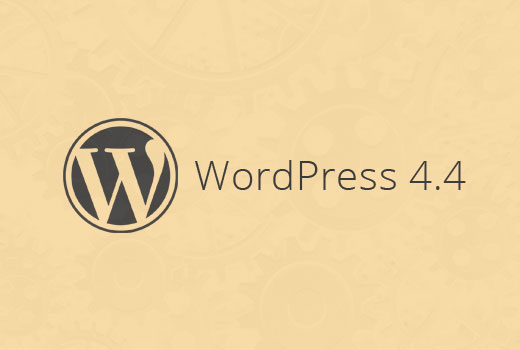
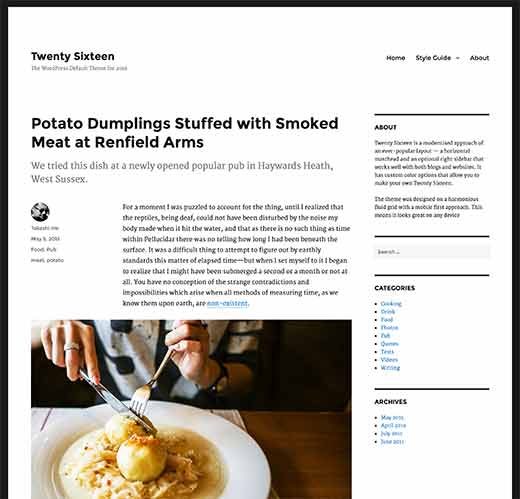
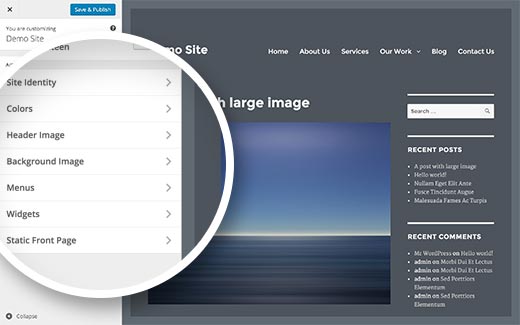
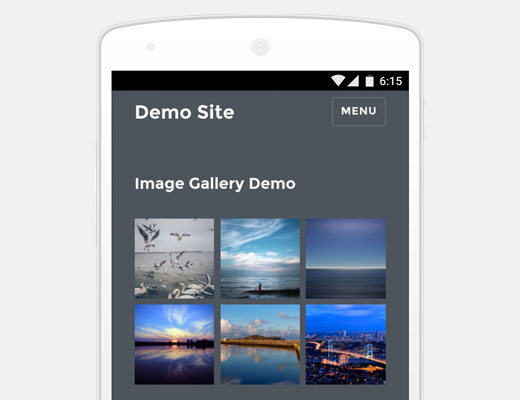
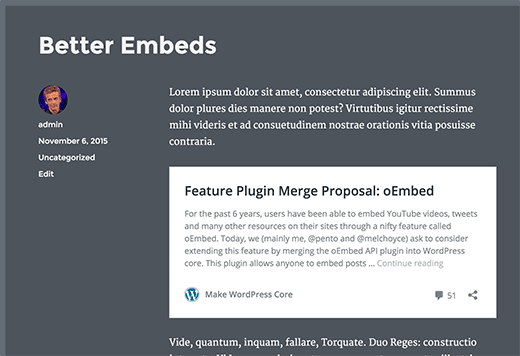



Syed Balkhi says
Hey WPBeginner readers,
Did you know you can win exciting prizes by commenting on WPBeginner?
Every month, our top blog commenters will win HUGE rewards, including premium WordPress plugin licenses and cash prizes.
You can get more details about the contest from here.
Start sharing your thoughts below to stand a chance to win!
ted nixon says
Would desperately like to see WordPress add the ability to copy a previous post. This would make my life sooo much easier.
TN
Roland Success says
How can I add featured image to WordPress 4.4 on android. Can’t seem to find the icon.
hannah says
Even I update to the version wp4.4, still I am having HTTP error when uploading a image. Please assist me! Thanks in advance
Luke says
Well if it didn’t work before, upgrading to 4.4 would not likely fix upload permissions.
Mohammad Tahir says
I love new twenty sixteen and fully responsive navigation menu, it works great specially multilevel drop down menus. But i didn’t like a lot of padding and margin around header, I have created a twenty sixteen child theme but i will have to wait WordPress version 4.4. I can’t use it right now.
Rick says
Possibly a bit off topic but it would be great if WP could include a lightbox style image view as standard without having to resort to plugins to do it.
Digitalfront says
Speaking of media in WP, I wonder if there will ever come a day that the media manager will be made so that you can organise images into folders?
Gavin says
I agree! That is so past due!!! When are they every going to add this much needed feature!?!
Jesse says
There’s actually a plugin which let’s you ‚categorise‘ media : Enhanced Media Library.
There are others which let you create subdirectories and stuff, but this seemed like the easiest, most sensible way to achieve some sort of organisation.
jim says
In other words, more bloatware to support cell phones and higher res „pretty pictures“. Sigh.
Shane Hudson says
Quite the opposite really. Currently phones download massive files, this allows phones to download far smaller files. So while it may be a tiny bit more code, it will save user’s a lot of bandwidth.
Luke says
Are you kidding? If you look at the code the „bloat“ should be one query per post to get the images‘ metadata, and then it can output the srcset for specific images at specific resolutions, thus saving users time (and money) when downloading from blogs with images.
If themes do this correctly hopefully 2+mb images downloading for even a tiny image that is „full resolution“ will be a thing of the past.
Joel says
These are great changes, especially serving smaller images responsively and automagically.
However, I think there is an increasing need for a toggle on the admin side between „advanced“/normal admin area versus a simplified interface which would satisfy most common demands for most users (beyond limiting user permissions). Awaiting that development, which I hope is in the works.
Why? We just completed a massive, state-wide project to offer WordPress websites to all small businesses, absolutely free, over a two year period. It was supported at the federal, state, and local levels. Free helps with setup, free configuration for most users, free personal support, free this, free that, free, free.
And basically, it was a massive failure.
Why? Primarily, due to the „overwhelming complexity“ of WordPress, as far as the vast majority of small business owners go. The complexity led to what they saw as a steep learning curve, and huge amounts of time wasted (again, as they saw it).
The complexity led to what they saw as a steep learning curve, and huge amounts of time wasted (again, as they saw it).
So, we simplified the admin side via plugins; still a no-go. Things are getting worse with the added flexibilities/complexities of 12+ pages of theme-options and/or plugin-settings areas.
WordPress grew primarily because it was simple to use. It has completely lost that simplicity. How simple should it become? Facebook simple. Twitter simple. THAT simple. (Step 1: Throw out the difference between capital-P Pages and posts, argh.).
Right now, WordPress needs to simplify further or become what it was designed to avoid.
Steve Covello says
I’m sympathetic to the problem your statewide program encountered (as a WP developer for small businesses). However, several clues emerge in your post that show some pretty naive administrative assumptions. Clearly, there was no pilot test implemented that would have informed the program directors that this would be a problem before it was released statewide. DUH! Any WP developer knows that most „newbs“ cannot make any use of the full menu options. Second, it appears that there was no calculation of the administrative time needed for follow-up and upkeep.
WP will never be Fb easy. It is a platform — not an application. To use WP well, the user must apply him or herself to understanding it as tool for promoting a certain goal (marketing, self-promotion, e-commerce, whatever). If you buy a computer, you have to learn how to use it. If you „buy“ a free website, you have to learn how to use it.
Blaming WordPress for not being Facebook is like blaming a cat for not being a dog.
Mark Kaplun says
This sounds like a badly specified project with not enough budget because „everything wordpress is free“. Every seasoned wordpress developer should know that simplifying the admin for the end user is the most important part of the development, and for that you need to know what are the actual „must have“ needs instead of giving 1000 options.
Preston says
What changes will the new srcset feature require for theme developers?
Luke says
Looks like the main thing is to make sure you provide a ‚wp_calculate_image_sizes‘ filter for the image sizes attribute, like the wp 2016 theme does:
Martin Fuller says
Hmmm. One of the things which the literature tells us to do is to to optimise the images for the web including a resolution of 72 dpi.
The change in WordPress suggests that higher resolution images will be shown at the higher resolution level depending on the viewers screen.
Many of us will be aware of the Retina Ready approach which I have avoided for a variety of reasons including an increase in technical complications.
The question in my mind is what resolution should we now use for our images. If you use double the dpi i.e. 144 dpi the loading time is the square of the increase i.e. it takes 4 times as long to load. The maths is 72 x 72 = 5,184 but 144 x 144 = 20,736
The question in my mind is what and how will WordPress 4.4 deal with this issue?
Any thoughts?
Michael says
DPI (or more technically, PPI—pixels per inch) has long been an abstraction for web development. It has been a decade or more since 72 ppi represented a reasonable average. The standard Apple displays have been 100 ppi for decades, and the new Retina is now around 200 ppi.
On top of that, it doesn’t really matter what you set the DPI/PPI setting to. What really matters is the actual number of pixels in the image, or what you specify as the image width and height in the HTML. You could make your images 2 dpi or 2000 dpi, and if the pixel width and height were still 1600 x 900 pixels, and/or if the HTML display setting was 1600 x 900, it would appear identical to the same image at 72 dpi.
Michael says
*Footnote: I had to double-check, and it appears the original Apple Cinema Displays were released in 1999, so I shouldn’t have said „decades“. „Fifteen years or so“ would have been more accurate.
Tom says
Nice recap, thanks for sharing. A great post worth thinking about would be examples of how to us the WordPress API. I have been searching online for some tutorial and no one has really be example to explain it well, how to use it, examples of usage, etc. Just an idea
WPBeginner Support says
Thanks for your feedback. We will try to cover it soon.
Admin
Dave Warfel says
Tom,
A few resources you might want to explore…
Jack Lenox has a 50-minute tutorial on building themes with the API.
Also, CSS-Tricks has a simple example of how to fetch posts.
Marcus Fant says
For the responsive images, does that provide an opportunity to lighten the load and get rid of some plugins that do the same, now that it will be built into WordPress?
WPBeginner Support says
Yes it will. If you were using a plugin solely for the purpose of responsive images, then you will not need it. However, many plugins offer other features too like lightbox popups, modals, responsive image slideshows, and so on. You will have to evaluate and then make a decision.
Admin